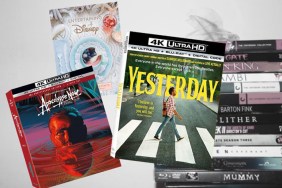No one ever forgets their first time. Mine was Hairspray. One of my closest gal pals fondly lays claim to Polyester. Others I know saw Pink Flamingos when it was revolutionizing the midnight movie circuit. Everyone has a story and a memory. But any way you slice it, all of these memories are Divine… literally. As I sat in my seat at Outfest this past weekend, filled with fevered excitement for the sold-out screening of Jeffrey Schwarz’s new documentary, I Am Divine, I looked over the crowd. It was a perfect reflection of what Divine had created in her short time on the screen: a fantastically diverse collection of young and old, male and female, professional and casual, tattoo-streaked and conservative-imaged. In many ways, the diversity of this mirrored Divine herself, a fact I was about to truly understand by watching this incredible documentary.
I won’t lie: I Am Divine is one of my favorite films of 2013 and it’s not for the reasons one might assume. While I am a huge John Waters fan, adore Divine to bits, and would have been more than happy to see a full-length feature just detailing their working relationship and Divine’s exploits with the Dreamlanders, I Am Divine is not that movie; it is far more than a one-note song about Harris Glenn Milstead’s life as Divine, it is a full-scale symphony that explores the complexities of Milstead as Milstead, Milstead as Divine, Divine as a character and Divine as a personal identity. Not only does this documentary encourage the audience to engage with Divine’s life story on a historical level, it asks you to reconsider the image, gender/sexuality and performances of an individual whose gifts were more extensive than just being the “the filthiest person alive.”
Divine was born Harris Glenn Milstead and grew up in Baltimore, MD. Bullied and teased, “Glennie” (as his parents called him) always seemed to have an affinity for glamour and performance. It wasn’t too long after meeting John Waters that they formed a deep life-long friendship and prolific and fruitful working relationship. As the film delves deeper into Waters’ and Milstead’s relationship, we discover how Divine herself was born and how, as Waters notes, once that happened Glenn Milstead disappeared, more or less. That rejected and overweight kid dissolved into a world of shocking anarchic performances and debauched disco dreams, evolving into the brilliant butterfly we all know and love. Tragically, Divine died far too early and just before another phase of her career was to begin. But the media she left behind for us to enjoy is, like her physical presence, large and in charge.
Jeffrey Schwarz is a consummate documentarian of some of the more fascinating characters in film history. His previous works, Wrangler: Anatomy of an Icon and Spine Tingler!: The William Castle Story are both excellent depictions of “outsider” figures (a porn star and a gimmick-driven horror filmmaker, respectively) that humanize and give dignity to areas of pop culture that may seem beyond the pale. I Am Divine is yet another piece to be added to this list. Each interview is carefully constructed to add and reveal more about the larger story and Divine herself. The discussions had with Frances Milstead (Divine’s mother), shot just before she passed away, are striking and resonate deeply in our current environment where parents of “a certain mindset” are learning how to deal with their child’s queer identity. Divine’s own words and interview footage, scattered intermittently through the film, are inspiring and heart-rending. All I could think about was how great it would be to still have Divine around. Letters read by friends, film critics’ perspectives, John Waters’ own admission that sometimes he still can’t believe that Divine is gone, all contribute to a larger picture of one of the most extreme cinematic presences who was also extremely loved.
As a film archivist, I Am Divine made my little heart soar. The sheer amount of footage of Divine as musician, Divine on Larry King, Divine being interviewed by Alan Thicke (!) was wonderful. Even moreso, the use of the 1967 queer short, Queens At Heart was particularly striking. This film, a much-treasured element in Outfest’s Legacy Project collection really added depth to the discussion of drag, gender identification and Divine’s own transition from wanting to look like Elizabeth Taylor to, well, wanting to look like Divine. I gasped several times at the photographic elements selected as well. While I was certainly familiar with some of the photos, many of these images were brand new to me and looked exquisite. I kept thinking, “Damn, Divine was so beautiful!”
As I watched I Am Divine it became clear to me how limited my knowledge of her work really had been. The discussions on performing with The Cockettes and theatrical involvement in the play Women Behind Bars added a dimension to Divine that I was simply unaware of. Alongside these revelations came the immense and spectacular visual array of flyers for all of Divine’s various shows and different performance work. I’m telling you… this documentary is an archivist’s dream.
I Am Divine is a beautiful and celebratory piece of documentary filmmaking that rescues a cult icon from the pigeonholing that is all-too-common with cult movie fans. This film elevates who Divine really was and showcases who Divine can be to us now. The continued hope and positive energy that Divine evokes in the film when discussing the need to follow your dreams is universally inspirational but seems particularly valuable coming from an individual who actively rejected a bullied identity and reinvented a new persona, full of strength, exuding confidence and becoming completely and totally Divine.

Ariel Schudson is a featured columnist at CraveOnline. Stalk her electronically at @Sinaphile.








